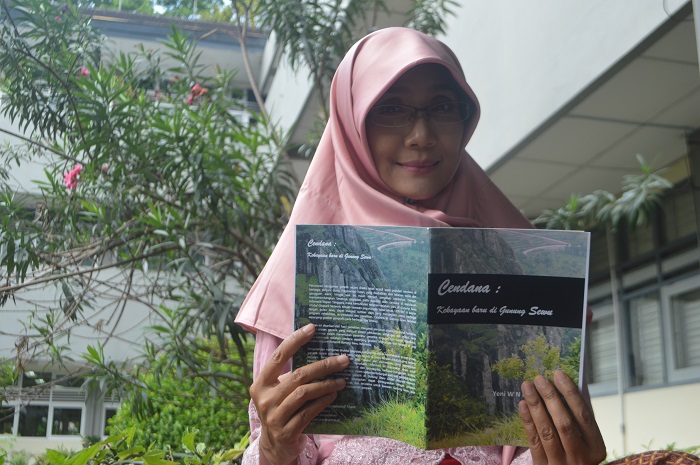
Sandalwood (Santalum album Linn., Santalaceae) population in Indonesia continues to decrease in the past decade, even almost going to extinction.
Data from East Nusa Tenggara Provincial government in 2010 recorded as many as 300 thousand of trees in Timor, Alor, and Sumba whereas in 2000 there were 1 million in those areas.
“The figure showed a reduction more than 100 percent from the past ten years,” said Yeni Widyana Nurcahyani, S.Hut., M.Sc., lecturer in Faculty of Forestry UGM, on campus, Friday (20/10).
Defending her dissertation on sandalwood research in Gunung Sewu at the Faculty of Forestry UGM, Yeni said the sandalwood is not just threatened to extinct but has also experienced a decline in significant genetic diversity. Forest fragmentation has caused this problem around the world, including Indonesia. Social pressure is seen as the main cause of such decrease in addition to natural disruption.
“The population of sandalwood in Indonesia that are found in Java, Sumba, and Timor also degraded in terms of genetics or reproduction due to anthropogenic and natural disruptions,” she said.
Seeing the extent of degradation in natural population in Southeast Indonesia, said Yeni, the emergence of new varieties in Gunung Sewu Global Geopark Network in mid-Java can be a promising resource for rehabilitation programme. The geopark can also be utilised for research and reintroduction purposes.
Her research in the geopark resulted in characteristic differences of landscape and habitat of the area. This caused a variation of population structure, climatic condition, and environment between varieties along the geopark geographic zone.
Yeni said genetic spatial or temporal diversities are varied along with different structure of population. Such diversities are much influenced by population structure, flower abundance, and clonality.
Yeni recommended strategies for sandalwood conservation that should be arranged in line with genetic basis, genetic diversities, pollination system, fragmentation level, and clonality of each population. Development of conservation strategy has to be integrated with regional and national conservation programme.
“Those can be implemented by various schemes of reintroduction, rehabilitation, or social forestry, including conservation management with geopark scheme,” she concluded.


